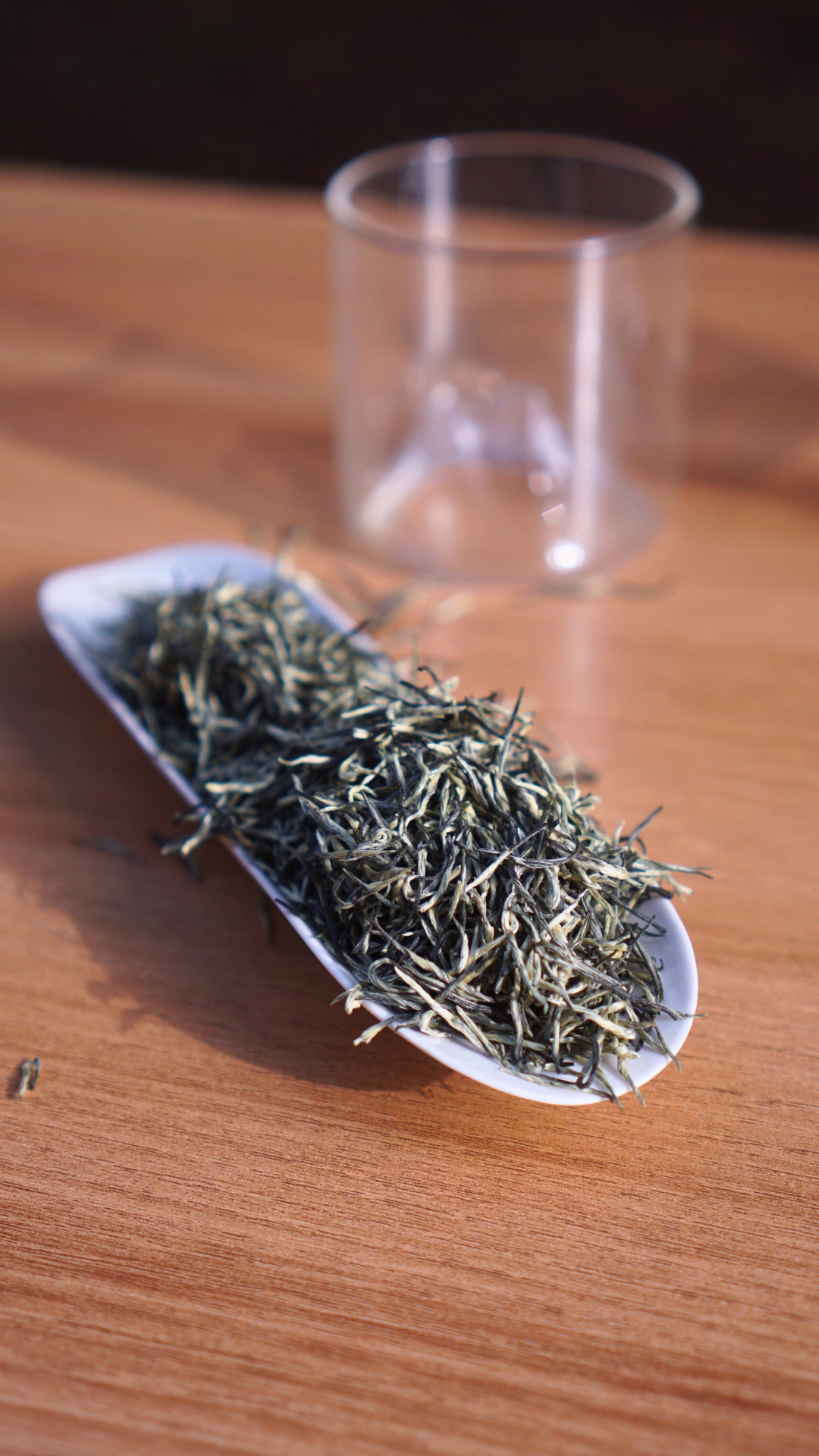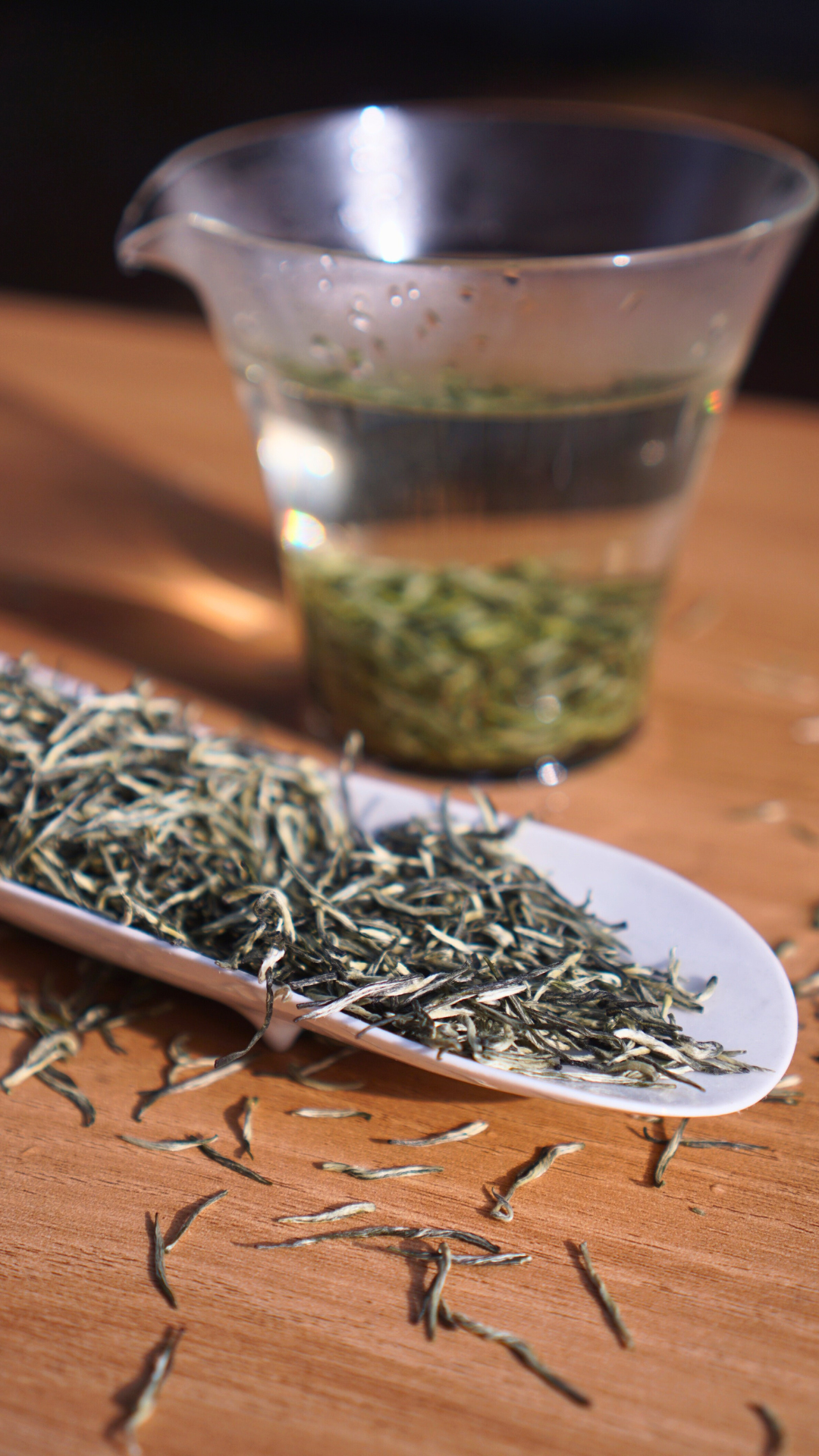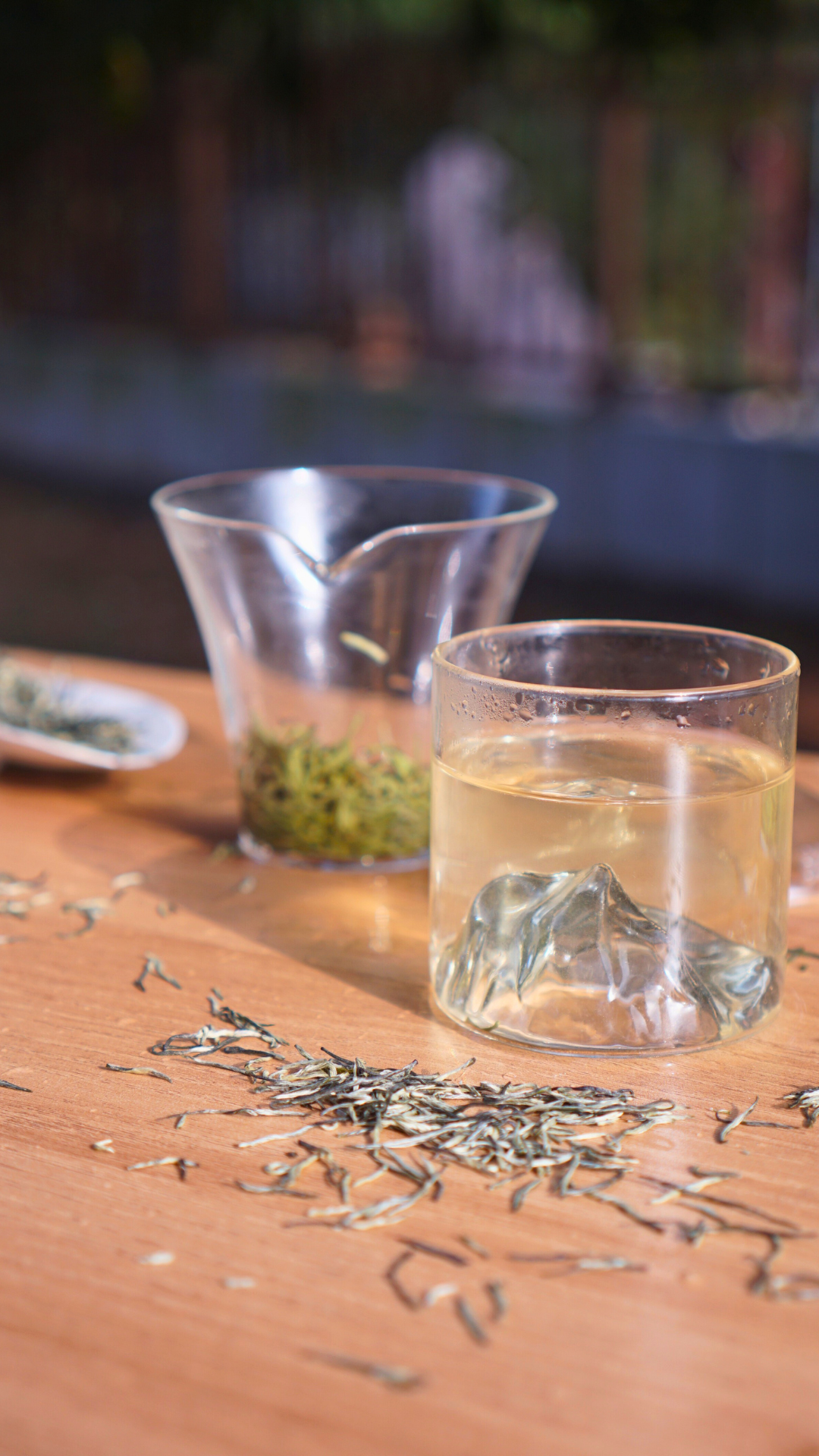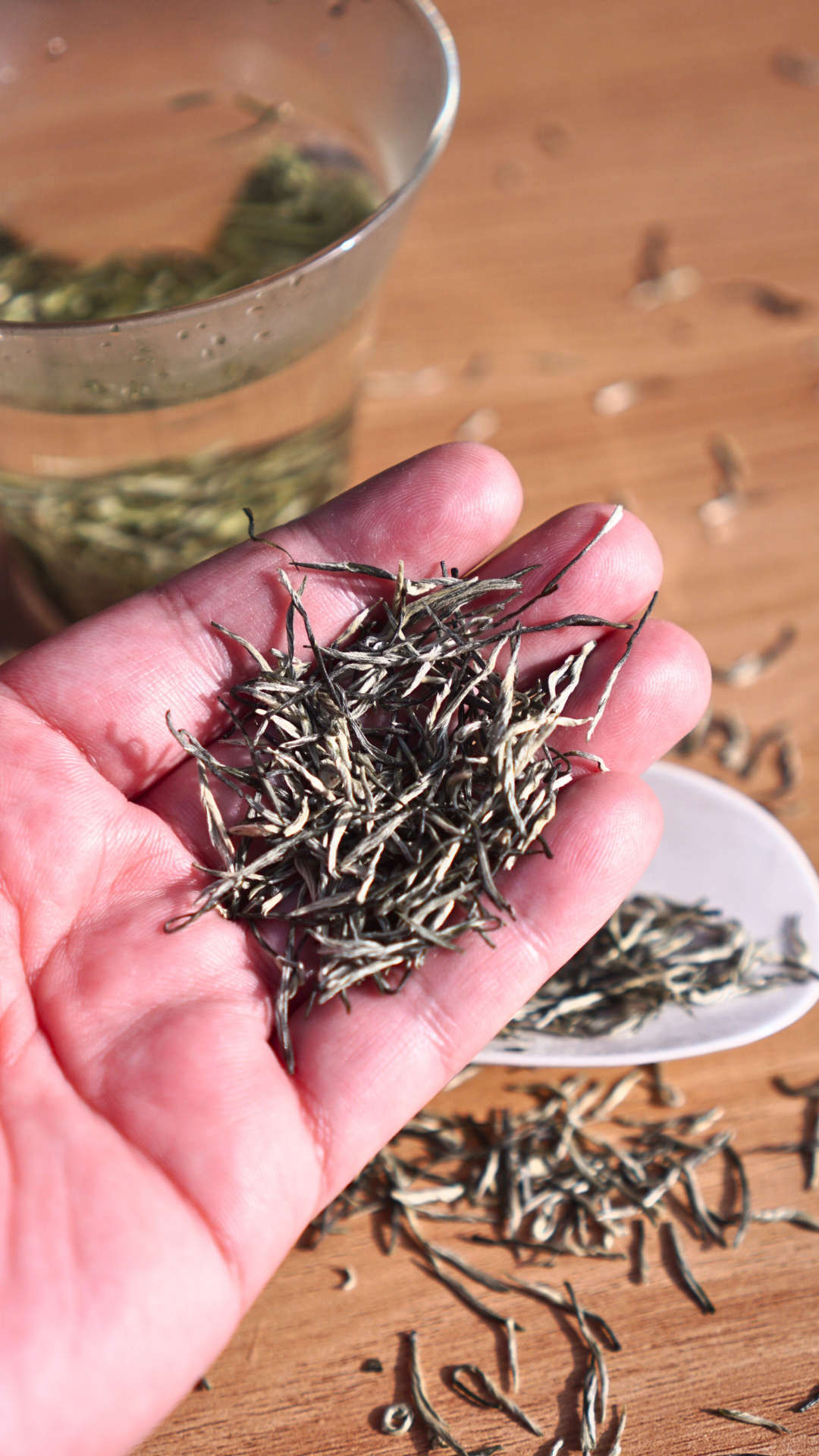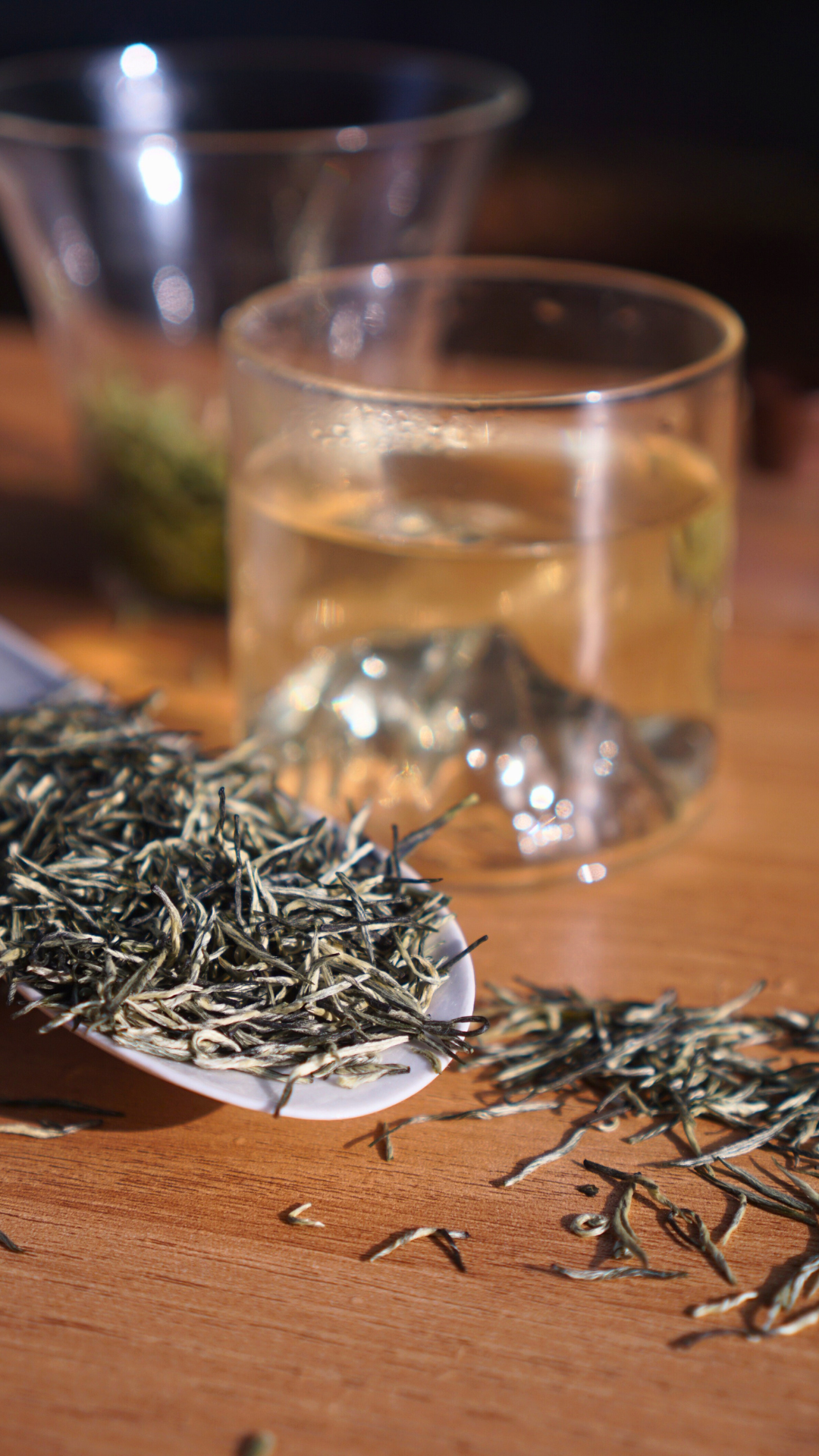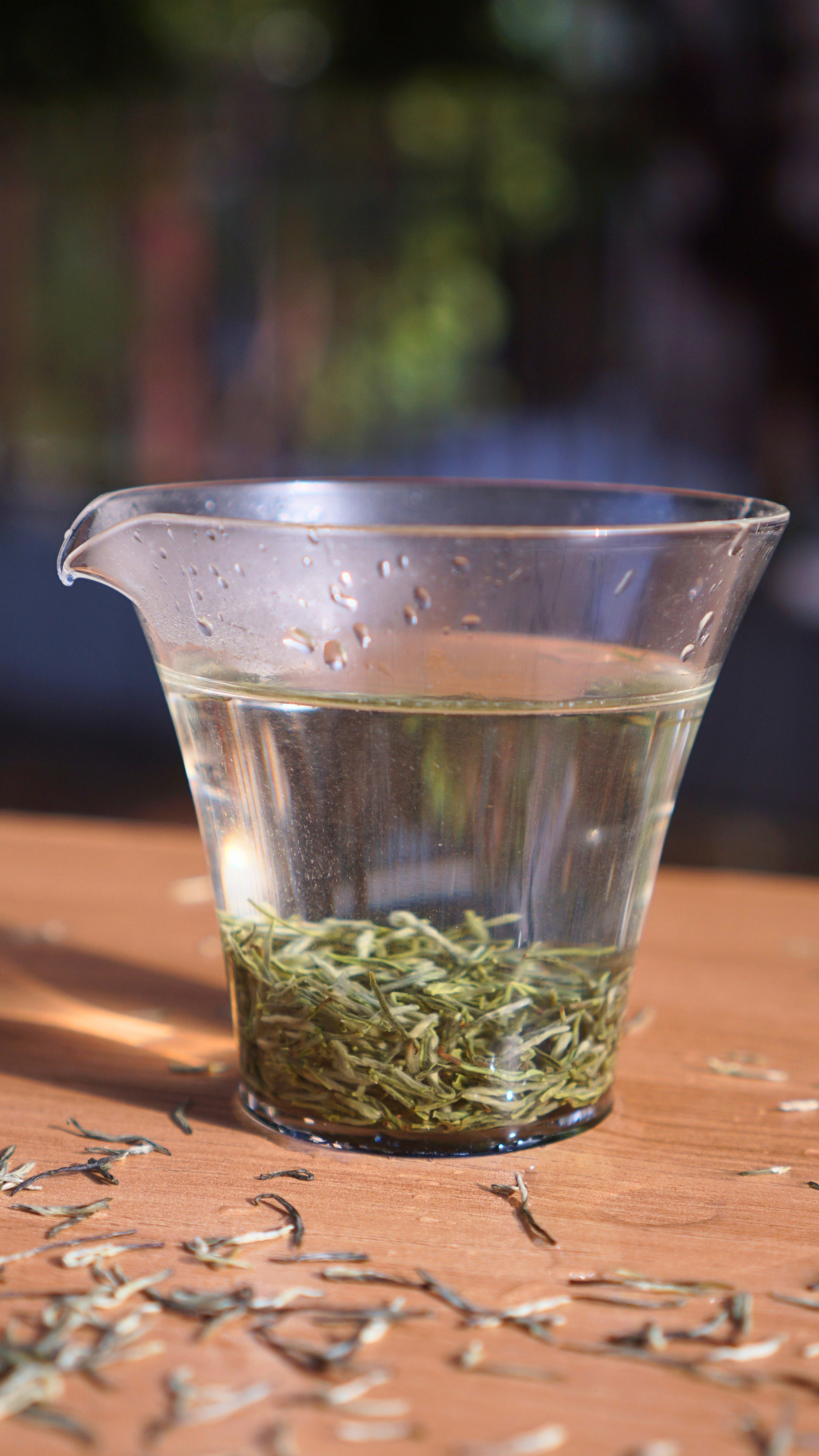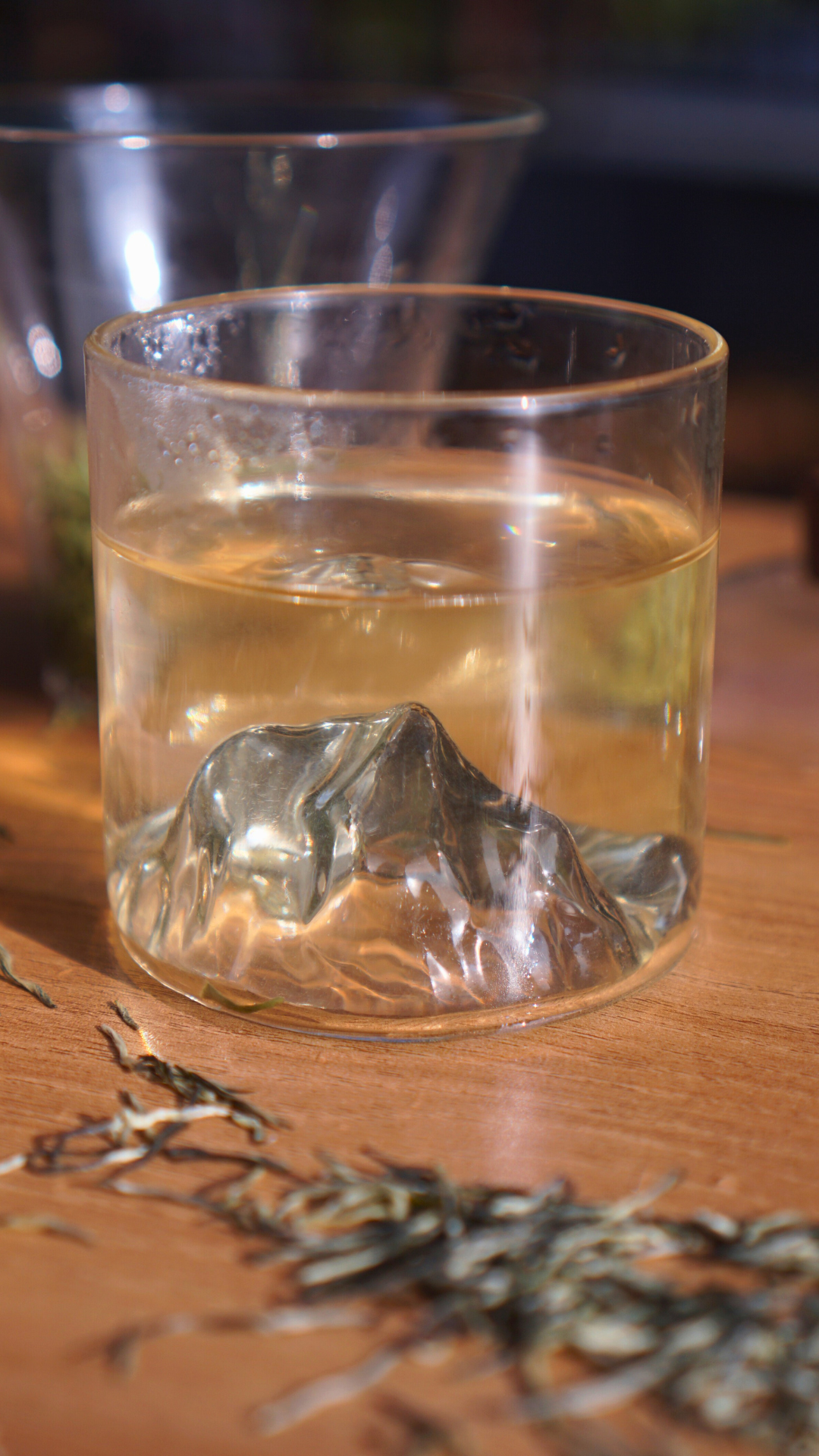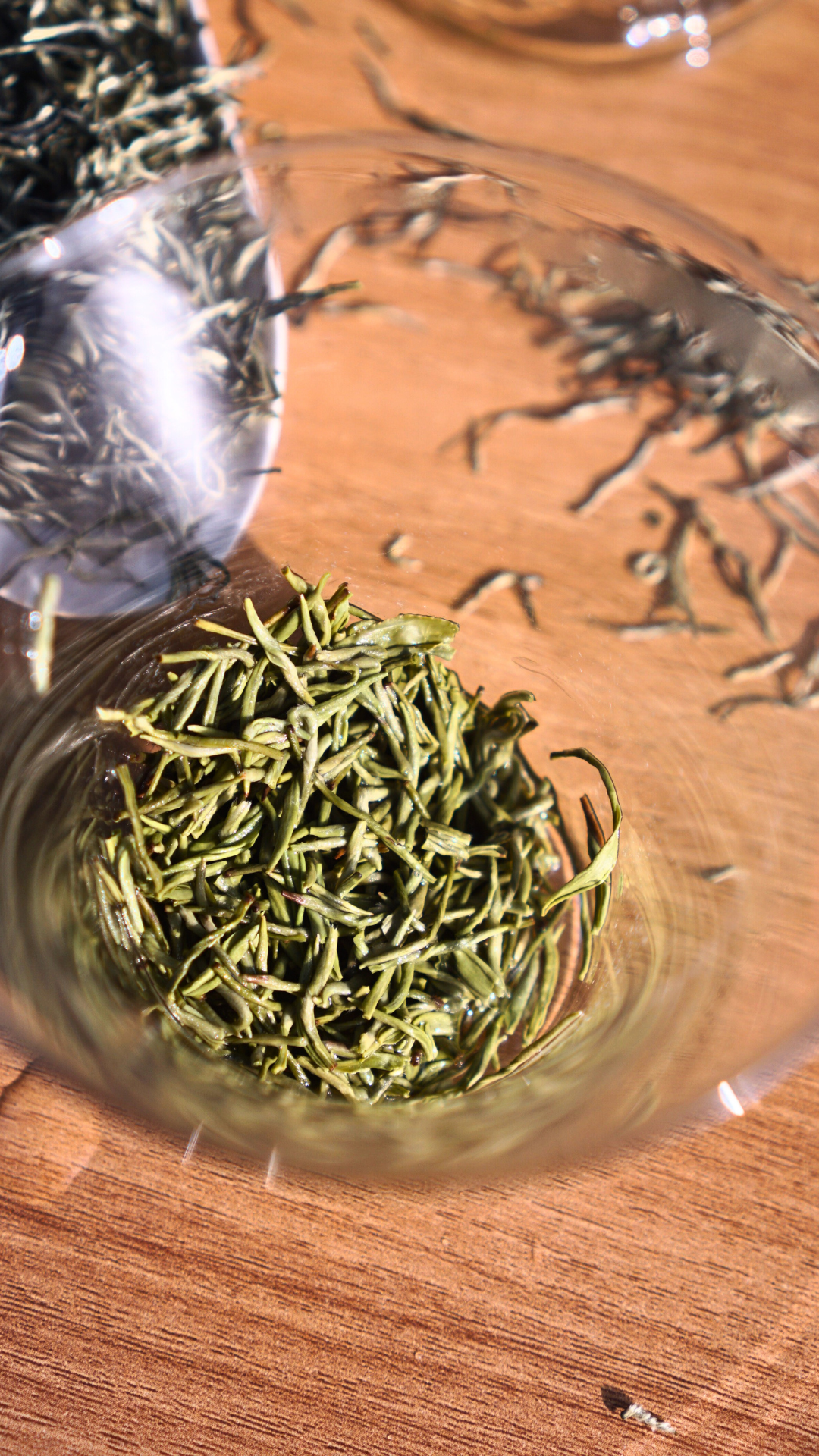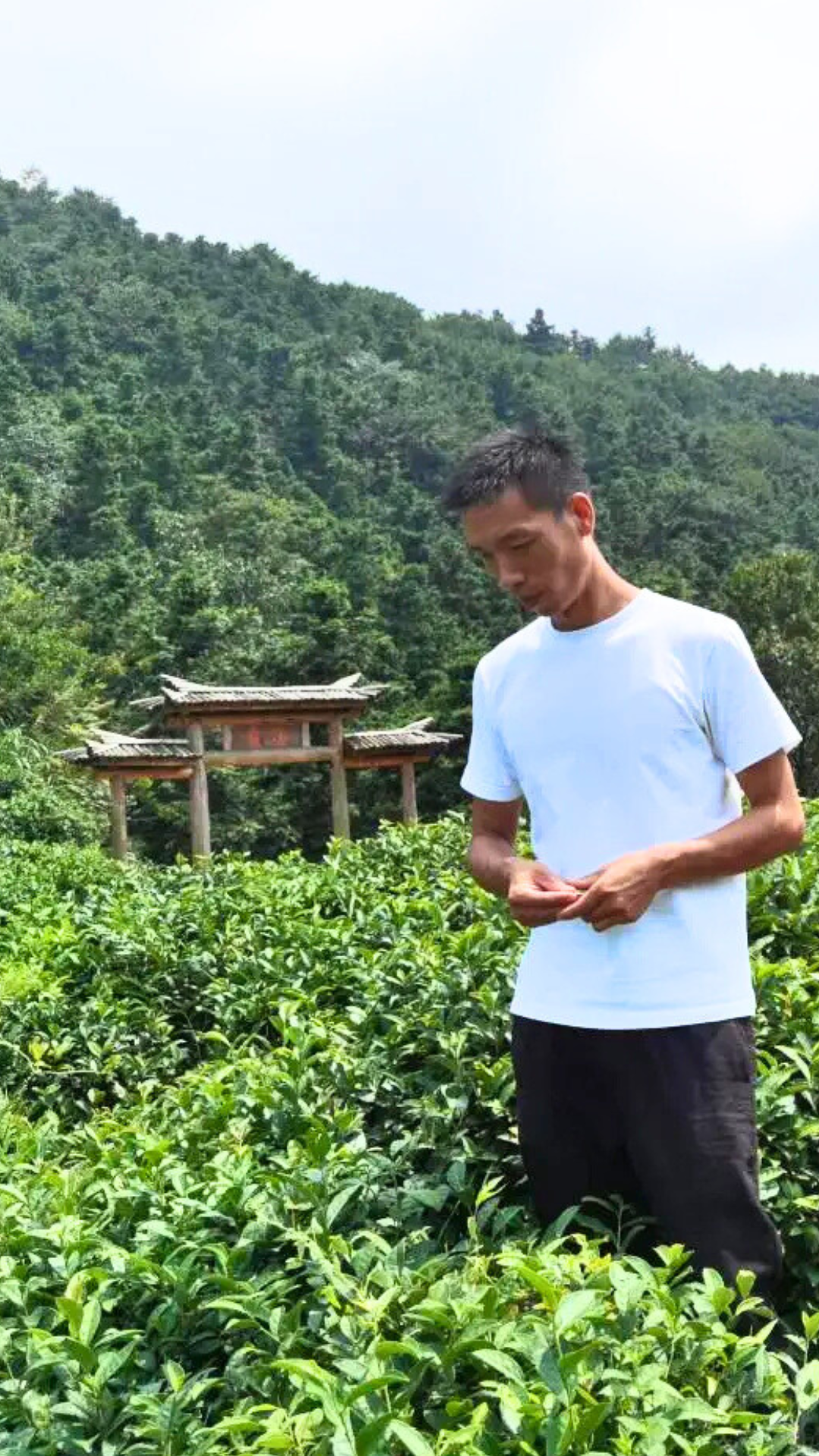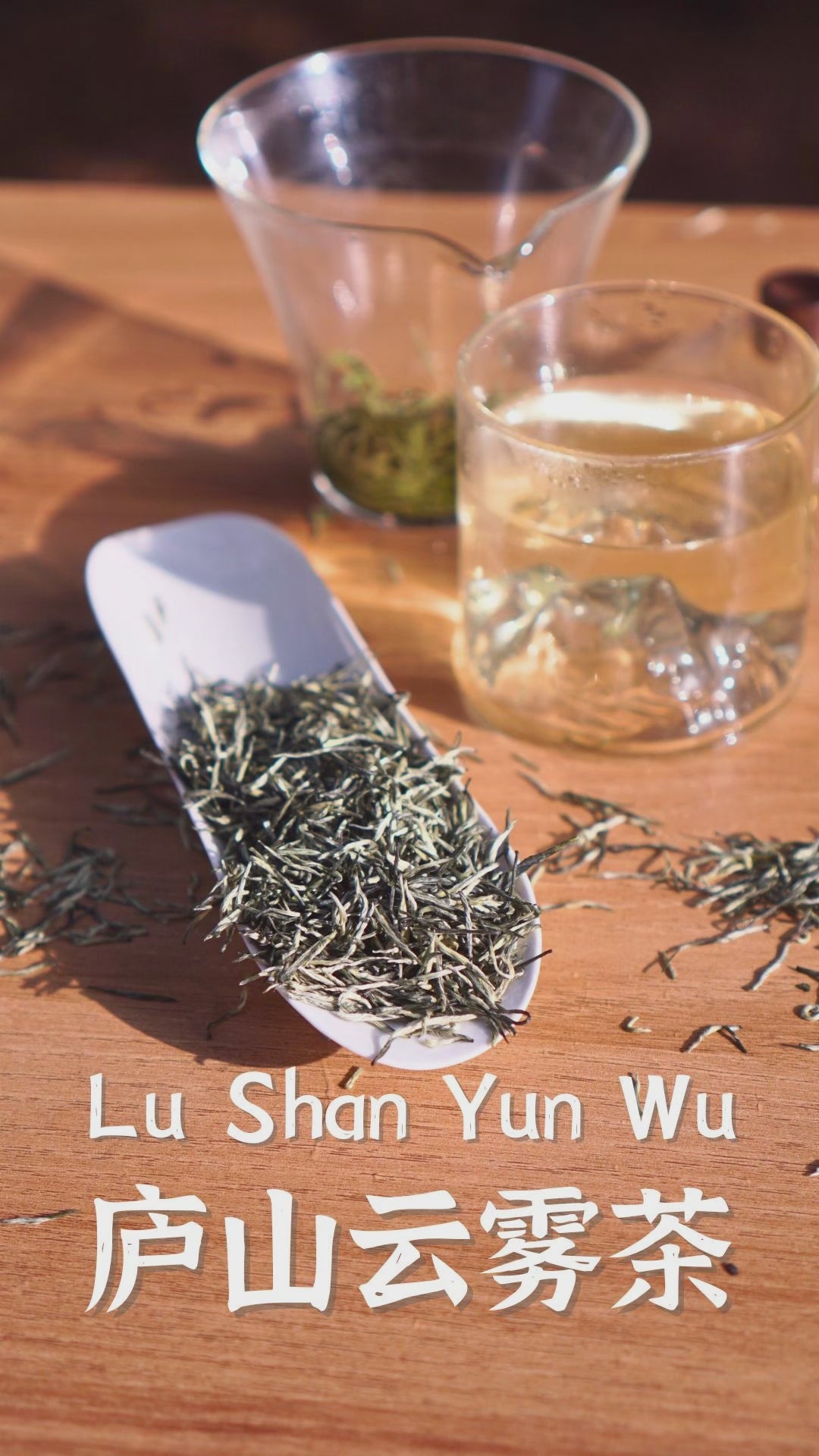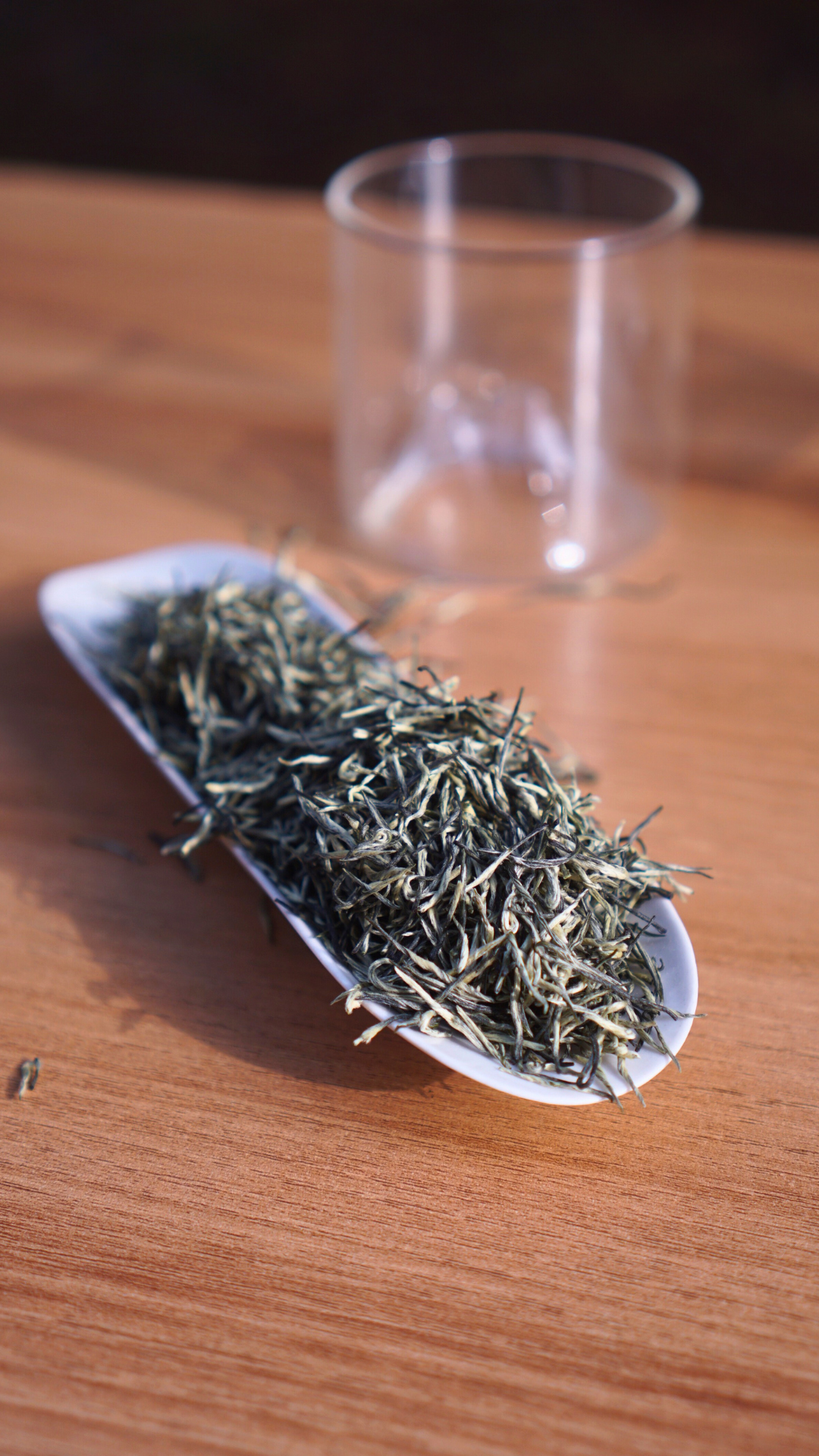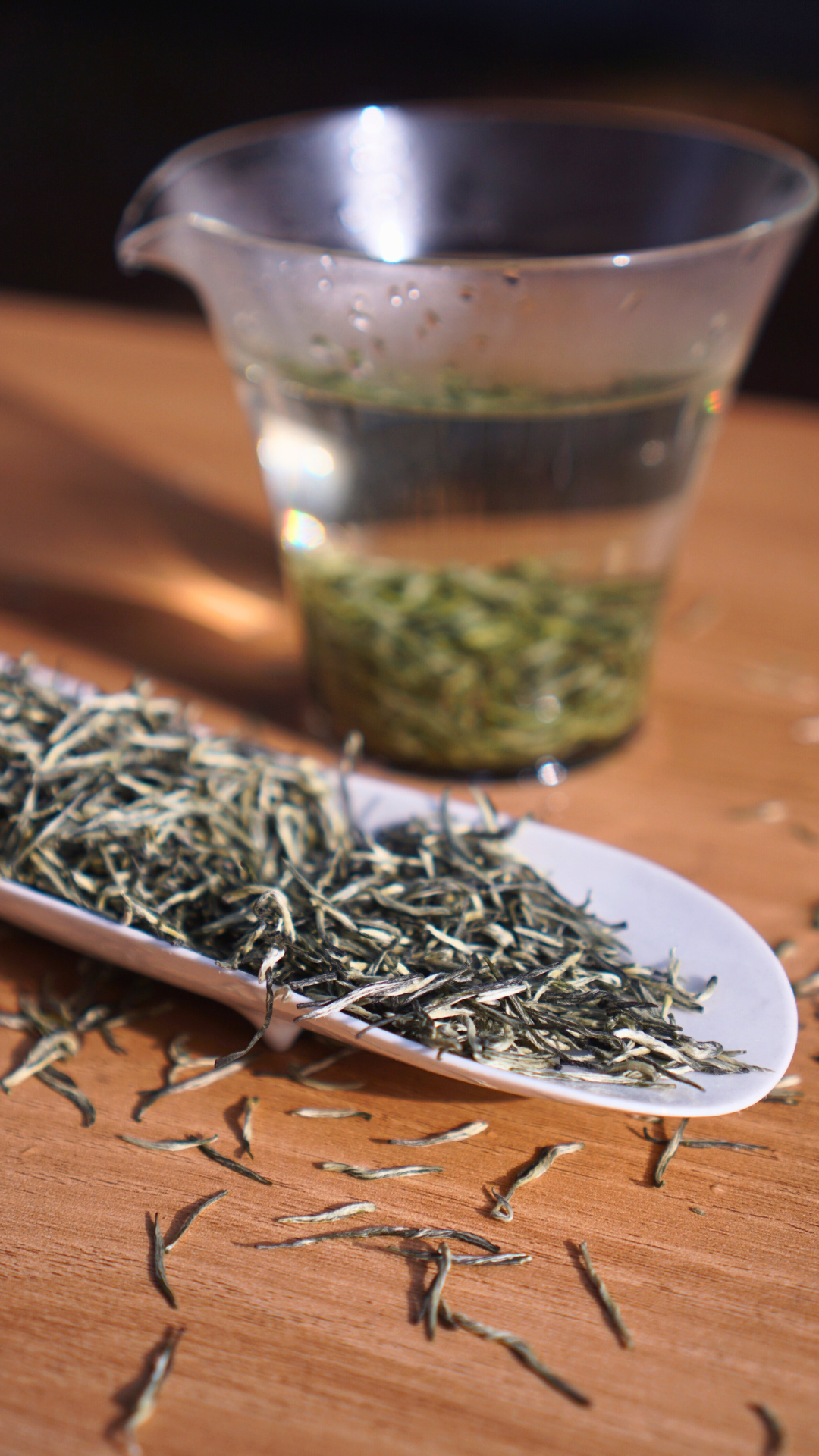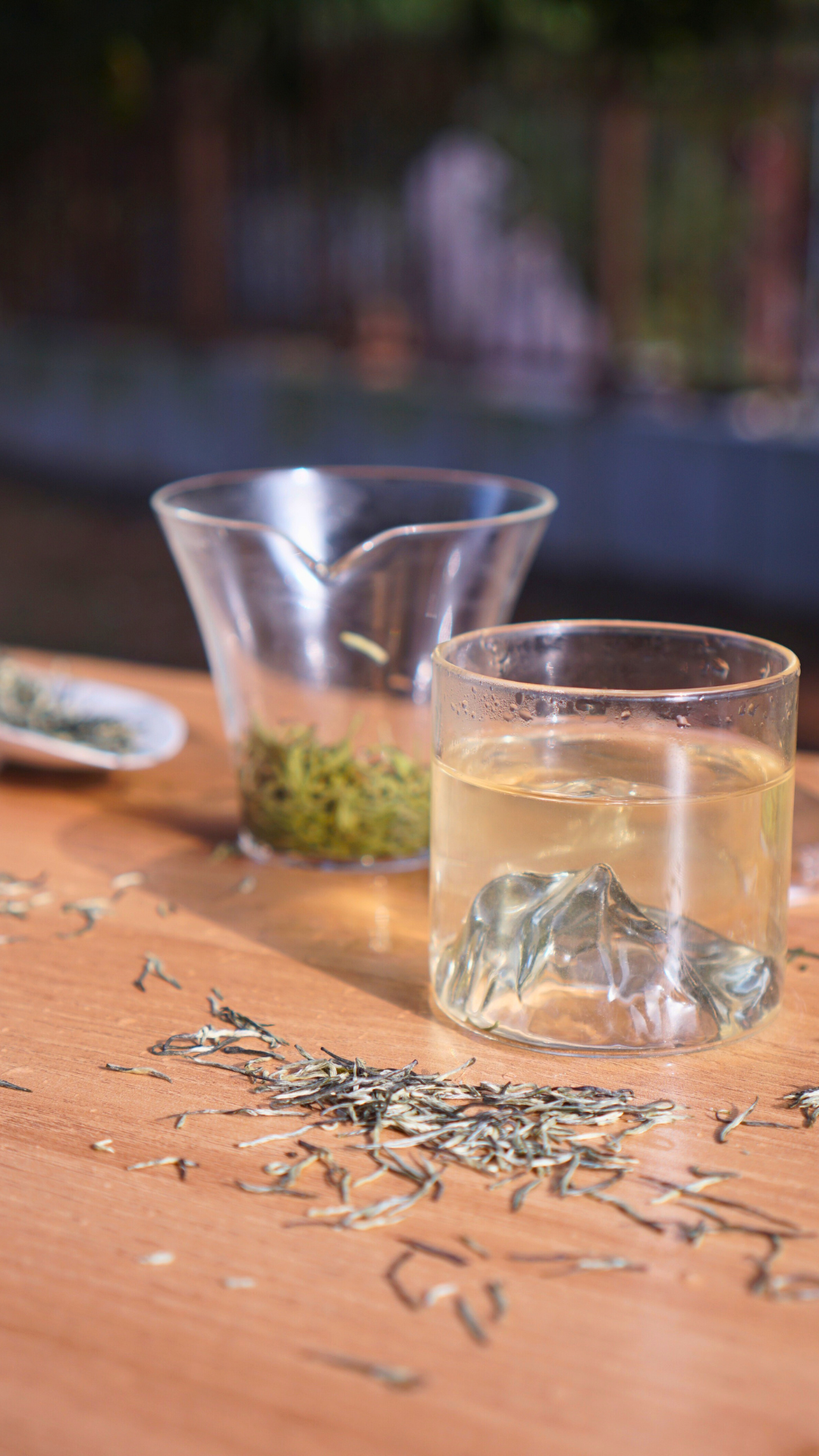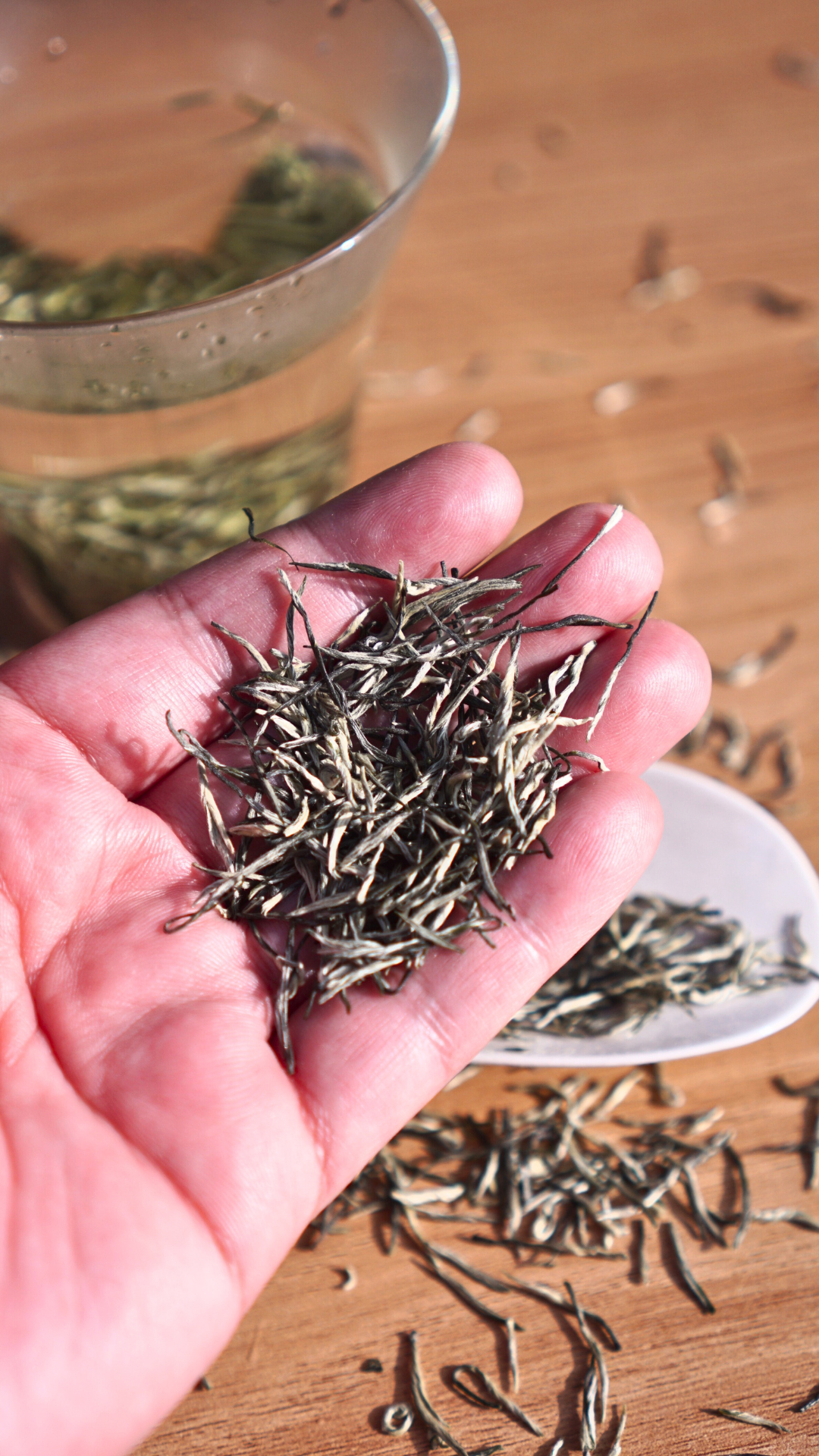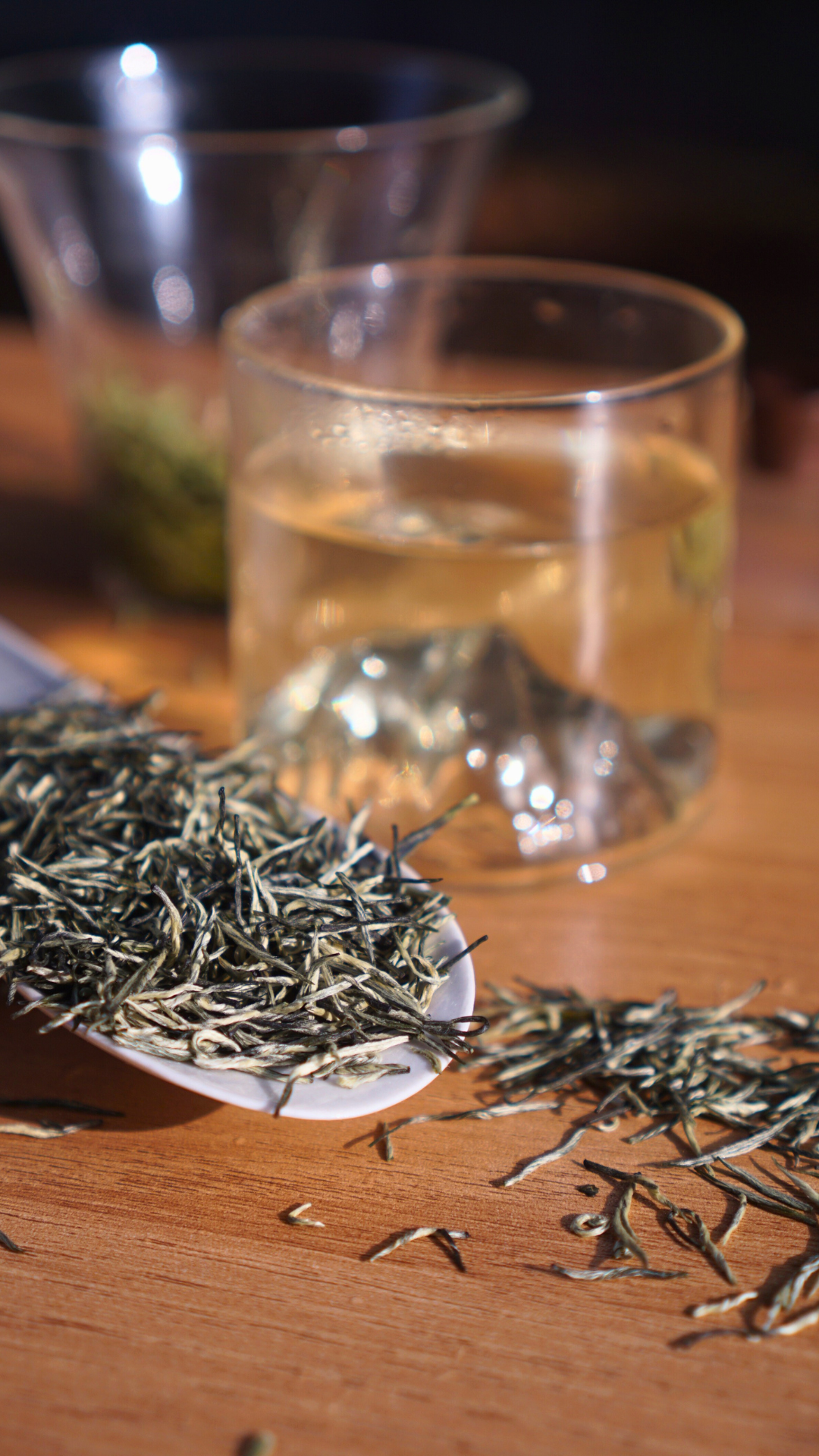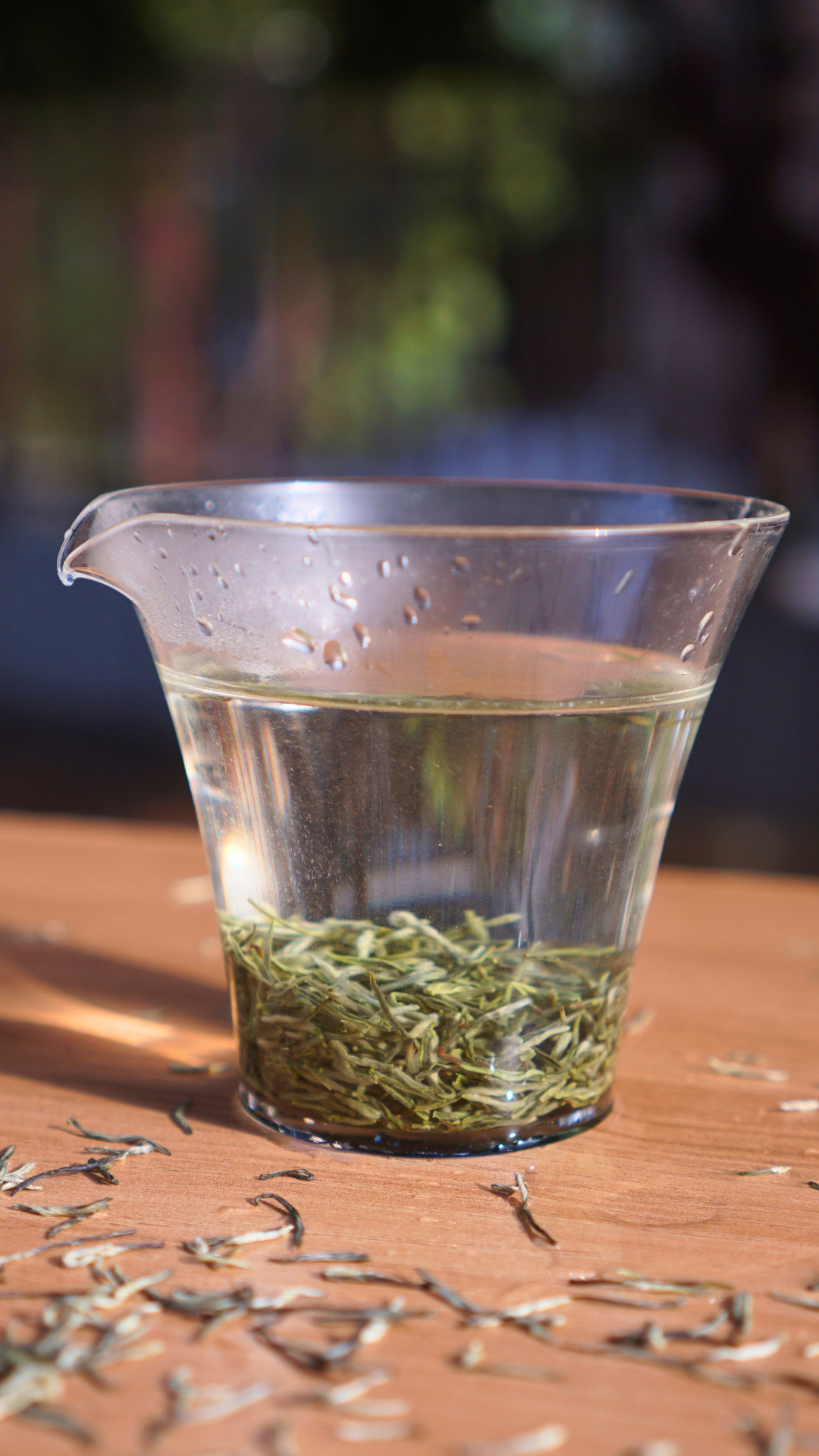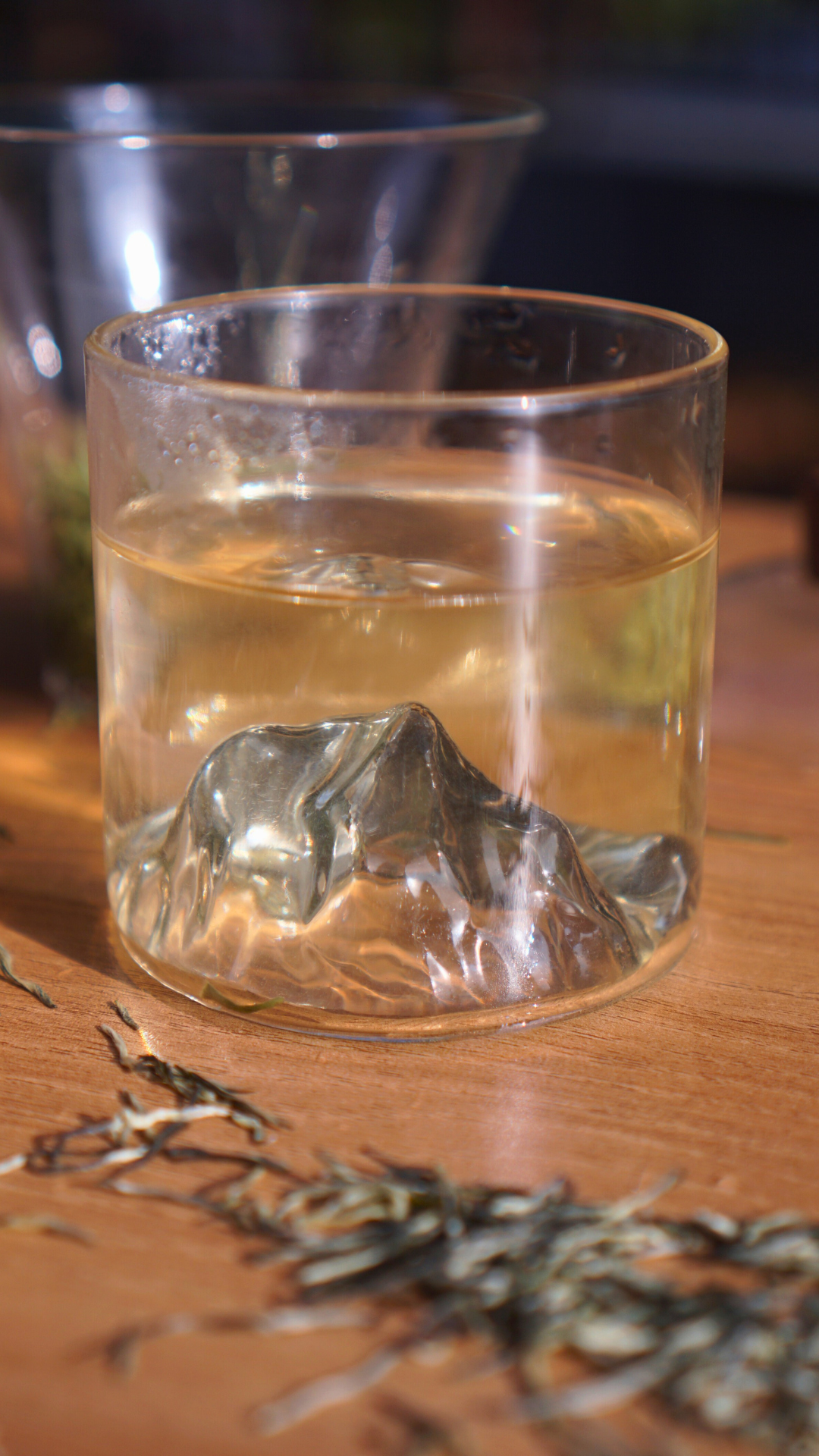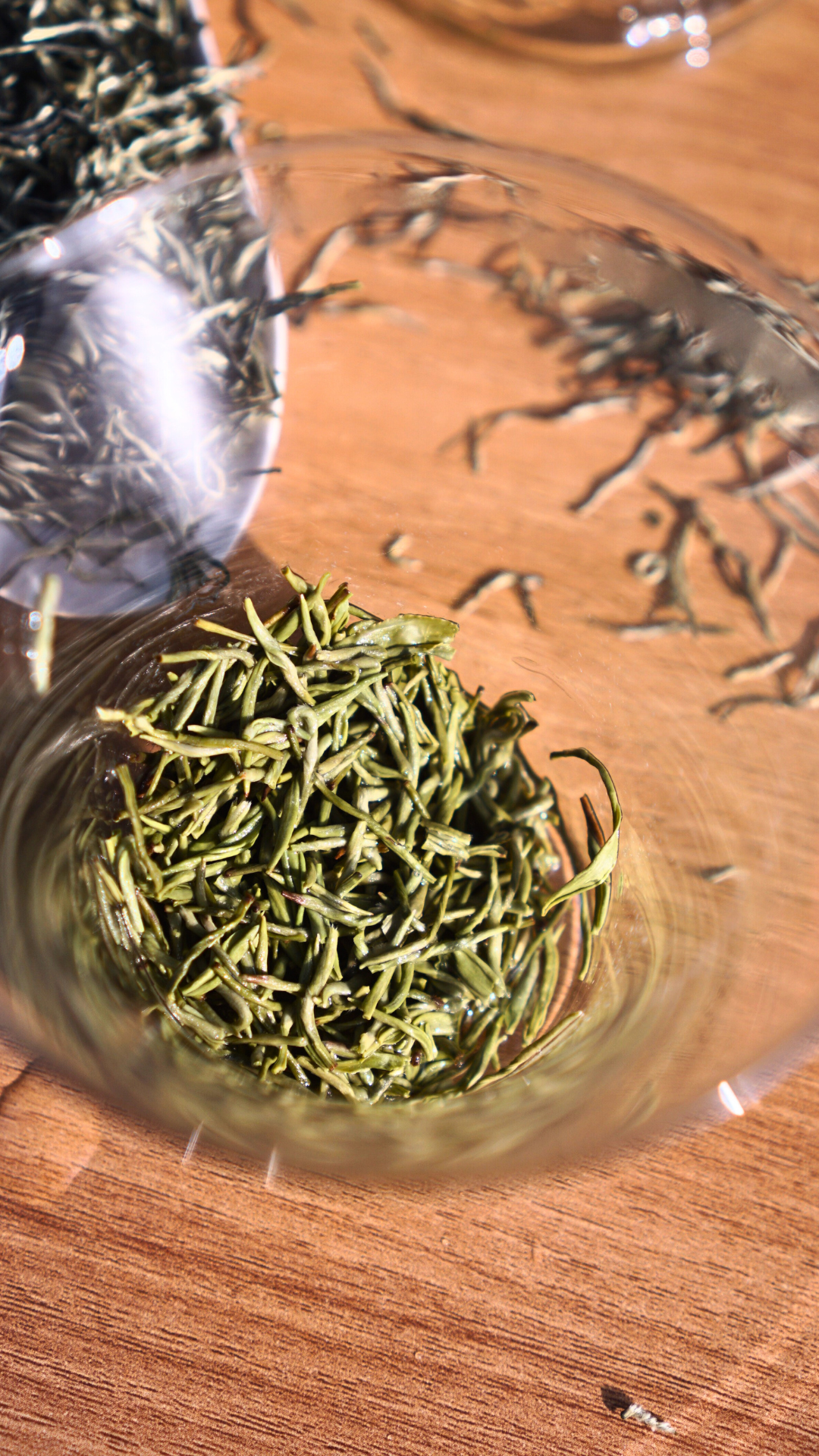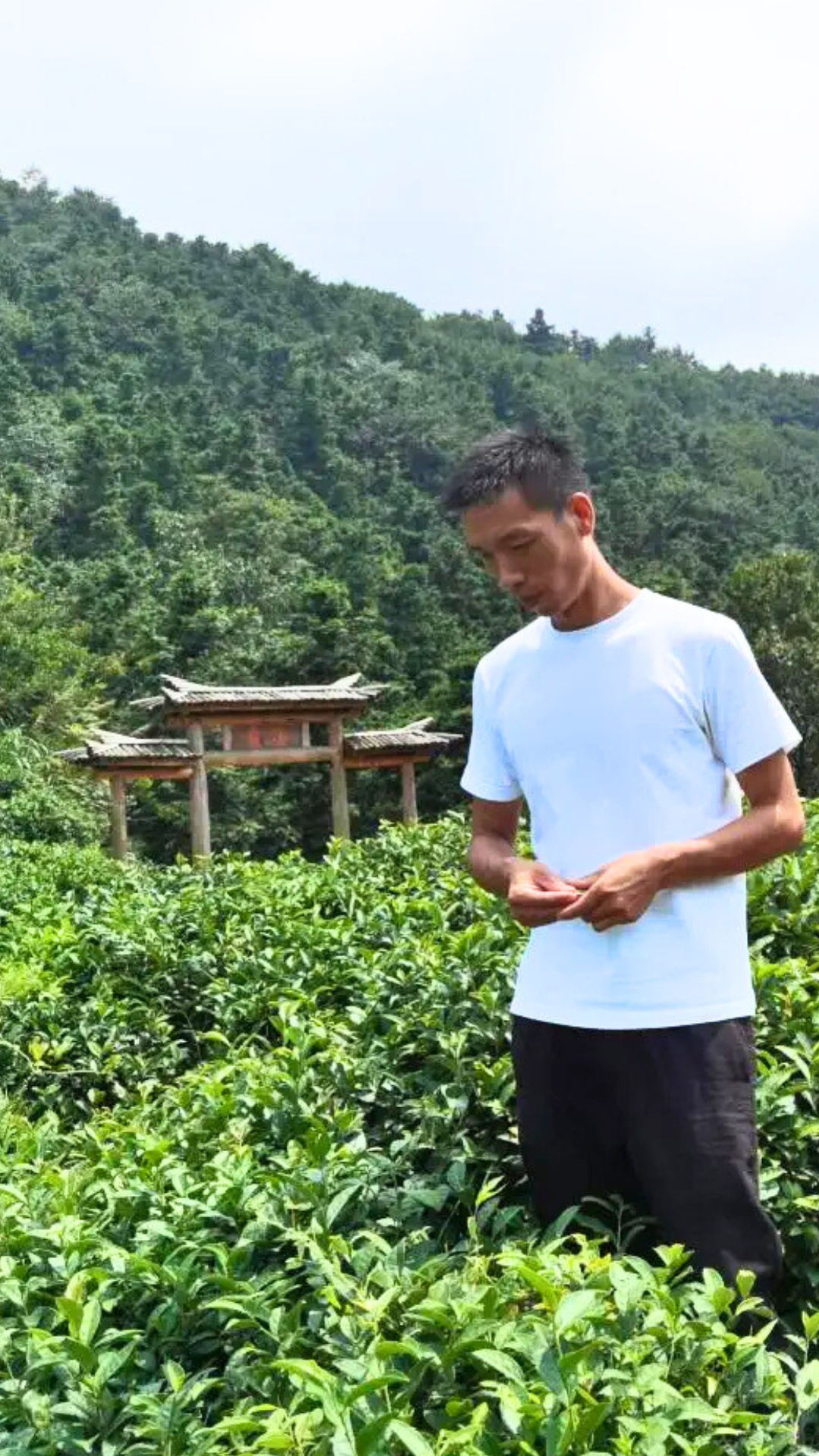Lu Shan Yun Wu
Lu Shan Yun Wu
庐山云雾茶
Lushan Yunwu Tea(Lu Mountain Cloud and Mist), historically known as "Wenlin Tea,"(闻林茶) derives its name from its origin in Lushan(庐山), Jiangxi(江西), China. It is one of China’s Top Ten Famous Teas. It has long been renowned for its "rich taste, refined color, fragrant aroma, and clear liquor."
In the Song Dynasty, Lushan's famous tea had already become an imperial tribute tea, and there has been a saying since ancient times: "Majestic peaks, picturesque mountains, and fragrant tea."
The tea leaves of Lushan Yunwu have an extended growth period, resulting in a higher content of beneficial components, with alkaloids and vitamin C levels surpassing those of ordinary tea leaves. The tea boasts a unique flavor due to the cool, misty climate of Lushan and the short duration of direct sunlight exposure. These conditions produce tea leaves that are thick, rich in buds, smooth and sweet in taste, resistant to multiple infusions, and packed with tea polyphenols, aromatic oils, and vitamins. Not only does it have a robust and refreshing flavor to invigorate the senses and quench thirst, but it also aids digestion, has antibacterial and detoxifying properties, and helps prevent gastrointestinal infections.
This Lushan Yunwu Tea has a compact and full-bodied appearance with slender and elegant leaves. Its color is bright and tender green with a smooth sheen, showcasing verdant buds.
The aroma is fragrant, long-lasting, sharp, and fresh.
The tea liquor is bright green and transparent, offering a refreshing, rich, smooth, and sweet taste.
The brewed leaves are tender green with a slight yellow hue, vivid, soft, and evenly spread. It is considered a premium green tea.
Lushan Yunwu Tea is often described using six key attributes: "tight and firm strips, verdant color with abundant buds, bright and clear liquor, tender and uniform leaves, lingering and enduring fragrance, and a mellow, sweet taste."
Picking and Processing
Picking and Processing
The processing and production of Lushan Yunwu Tea are extremely meticulous and entirely handmade. The initial stages involve withering, loosening, rolling, second frying, shaping strips, twisting strips, sorting, fluffing, and drying (or baking), among other steps. The refinement process includes removing impurities, grading, blending, and packaging.
Each step has strict requirements: for instance, withering must preserve the green and vibrant color of the leaves; rolling must be done gently by hand to avoid breaking the delicate leaves; twisting is also done manually; and stir-frying requires light and careful movements. Only by adhering to these methods can the superior quality of Yunwu Tea be ensured.
Brewing
Brewing
The "top infusing method" is recommended for brewing this tea. This involves first pouring water at 85°C into a cup and then adding the tea leaves. If using a glass cup, you'll observe some tea leaves sinking straight to the bottom, others meandering downward gently, and some floating up and down as they unfurl and move gracefully—a process known as the "tea dance." Soon, as the dry tea absorbs enough water, the leaves gradually open, revealing one bud and one leaf. Meanwhile, wisps of tea fragrance rise with the steam from the surface. At this point, inhaling the aroma of the tea liquor while it is hot will leave you feeling refreshed and delighted.
Green Tea Storage
Green Tea Storage
It's recommended to store about 50g of green tea in sealed bags in a cool, dark cabinet or drawer for daily use. If room temperature is high, refrigerate at 0-5°C. Store remaining tea sealed in the freezer. This way, green tea can maintain its flavor for up to 2 years.
First, high temperature is the biggest concern in storage. For tea leaves, especially green tea, temperature is the most crucial factor to monitor. This is mainly because high temperatures accelerate the degradation of chlorophyll in green tea, continuously converting it into pheophytin, causing the color to turn dark brown. Research shows that for every 10°C increase in temperature, the rate of browning accelerates 3-5 times, and tea leaves easily become stale. Additionally, high temperatures intensify the auto-oxidation of tea polyphenols, dramatically reducing their content and thereby decreasing the tea's value.
Second, light exposure is another factor to avoid when storing green tea. Especially during summer and autumn when light is much stronger than in other seasons, improper storage can cause plant pigments and lipids in green tea to undergo chemical reactions, producing various off-flavors and resulting in a sun-damaged taste.
Third, foreign odors must be avoided. Particularly in summer and autumn when temperatures are generally higher, items tend to emit strong odors during storage, and green tea easily absorbs these odors, leading to deterioration. Therefore, isolation from foreign odors is essential during storage.
Finally, oxygen is the root cause of off-flavors in almost all stored items. This is because oxygen can catalyze or play a crucial role in many chemical reactions. Tea polyphenols in green tea are strong antioxidants, making them highly susceptible to oxidation. After oxidation, the brewed tea turns deep yellow and loses its fresh green tea aroma.
Common Storage Methods for Green Tea
1. Plastic Bag and Aluminum Foil Storage Method: Choose food-grade plastic bags with seals, preferably those with high density and good material quality. Avoid using scented or recycled plastic bags. After placing tea in the bag, squeeze out as much air as possible. Using a second plastic bag in reverse direction is even better. Clear plastic bags should avoid sunlight exposure. Aluminum foil bags work on similar principles. Additionally, divide purchased tea into separate sealed bags, store them in the refrigerator, and brew in batches to minimize air exposure after opening, thus slowing quality deterioration.
2. Metal Container Storage Method: Choose iron, stainless steel, or dense tin containers. For new containers or those previously used for other items with residual odors, place some tea powder inside, close the lid, shake in all directions to wipe the inner walls, then discard to remove odors. Double-lidded stainless steel tea containers available in the market are convenient and practical. Using clean, odorless plastic bags inside metal containers with tape-sealed lids is even better. Metal containers with tea should be kept in cool, shaded places away from direct sunlight, odors, moisture, and heat sources. This prevents rust and slows tea aging and deterioration. Tin containers are particularly effective at preventing moisture, oxidation, light exposure, and odor absorption.
3. Low-Temperature Storage Method: Maintain tea storage environment below 5°C using refrigeration or freezer storage. Note that for storage periods under six months, refrigeration at 0-5°C is most economical and effective; for periods over six months, freezer storage (-10 to -18°C) is better. Tea should be properly packaged and completely sealed to prevent odor absorption. When purchasing large quantities, divide into small packages (containers) before refrigeration/freezing, and remove only the amount needed for brewing. Avoid repeatedly freezing and thawing the same package.
- Loose Green Tea
- 500g/pouch
- Free Shipping
Couldn't load pickup availability
